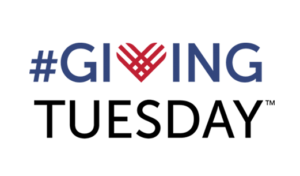our blog
Donor Engagement: Giving Trends and Lessons Learned
In 2022, nonprofits built upon pandemic lessons to make diverse forms of engagement the new best practice. As the world emerged from lockdowns and social distancing, nonprofits had to reflect on the strategies that worked well for them and those that needed to be modified to keep up with changing donor comfort levels and preferences.
Stemming from their resilience in 2020-2021, nonprofits continued to optimize virtual and hybrid fundraising, offer flexible giving methods to cater to donors, and amp up their digital presence to expand their reach. As a result, they were able to maximize support and get closer to reaching their goals.
There were several donor trends and now-standard nonprofit best practices that came out of 2022. In this article, we’ll walk through the following major breakthroughs so your nonprofit can reflect on the past and improve for the future:
- Social giving attracts younger, more diverse donors.
- Mobile giving is on the rise.
- Giving days became more impactful.
- Recurring giving increased.
- Hybrid and virtual fundraising became more popular.
 Range Of Multiethnic Real
Range Of Multiethnic Real
In 2022, many nonprofits saw a continued shift in donor demographics. According to the OneCause 2022 Giving Experience Study, about half of Generation Z and Millennials reported giving more money to nonprofits through social giving (i.e. various forms of event-based and peer-to-peer fundraising) compared to their older peers.
In fact, younger donors are making social donations in amounts equal to or higher than older donors. Millennials’ average social giving donation amount was $284 compared to $112 for Boomers and Matures. Gen Z gave an average social donation of $169, and Gen X averaged $170.
Along with promising changes in age demographics, there were also continued shifts in the number of diverse donors and their giving patterns. The number of Black donors increased five percentage points to 19% in 2022’s study, and over half of Black donors reported giving more money to charity than in the previous year.
Nearly half of Hispanic donors in this year’s study also reported giving more than during the previous year. These changes reflect growing demographic reach for nonprofits that can effectively communicate their needs online and tap into social giving trends.
With these trends in mind, it’s important that your nonprofit makes an intentional effort to connect with young, diverse donors going forward. A great way to do this is through marketing your organization widely online and on social media. Highlight the problem your nonprofit is working to solve, how your work directly addresses that problem, and how donors can take action to be a part of the solution.

Mobile giving increased significantly in recent years. According to 360MatchPro’s fundraising statistics, mobile users grew as a portion of donation transactions by 17% compared to the previous year. In total, mobile users made up 33% of donation transactions on nonprofit websites.
This shows that donors appreciate streamlined donation experiences, so making your donation page accessible and mobile-friendly is key. An optimized donation page should have the following features:
- Able to fit any screen size. Whether your supporters are on a computer or using a smartphone as small as their hand, they should be able to easily engage with your donation page. If the formatting is difficult to navigate, site visitors will be more likely to leave your page, causing your nonprofit to miss out on revenue.
- Streamlined, accessible fields. All fields on your donation page should be relevant to the donation process and easy to fill out without too much zooming or scrolling.
- Clickable buttons. Make sure any links or buttons on your page take users to the correct place. For example, if you have a “Donate Now” button on your homepage, it should work for mobile users and allow them to easily access your donation page.
Along with a mobile-friendly donation page, you can invest in nonprofit software that offers text-to-give capabilities. With text-to-give, your nonprofit will create a unique phone number that donors can text with their intended donation amount or a code (such as SAVEDOGS for an animal welfare campaign). Next, donors will receive a link to a concise mobile-optimized form where they can fill out their credit card information, making the whole process take just a few moments.
 While giving days have always been a great opportunity for nonprofits to maximize support, they saw exceptional results in 2022. Giving days are 24-hour periods dedicated to raising funds and bringing awareness to a particular issue or the importance of charitable giving.
While giving days have always been a great opportunity for nonprofits to maximize support, they saw exceptional results in 2022. Giving days are 24-hour periods dedicated to raising funds and bringing awareness to a particular issue or the importance of charitable giving.
Of course, one of the most impactful giving days for nonprofits is Giving Tuesday, which takes place right after Thanksgiving. In 2022, donors in the United States raised $3.1 billion on Giving Tuesday. While Giving Tuesday is applicable to any nonprofit, there are also specific giving days that may hold special meaning or value to your cause. For example, many mental health organizations run fundraising campaigns on World Mental Health Day.
Inside of your nonprofit’s larger giving day campaign, you can offer supporters the opportunity to make their own fundraising pages. A DIY fundraiser empowers your most loyal volunteers to fundraise on your behalf and share their fundraising pages with their friends, family members, and coworkers. Supporters will feel more connected to your cause and can help your organization gain new donors.
 Along with general increases in giving, there was also an increase in recurring giving in 2022. The OneCause 2022 Giving Experience Study, which surveyed donors about their giving patterns in the 12-month period from April 2021-May 2022, found that 70% of social donors were very likely or somewhat likely to become regular donors.
Along with general increases in giving, there was also an increase in recurring giving in 2022. The OneCause 2022 Giving Experience Study, which surveyed donors about their giving patterns in the 12-month period from April 2021-May 2022, found that 70% of social donors were very likely or somewhat likely to become regular donors.
And with 86% of nonprofits reporting recurring giving as a top challenge as they enter 2023, the fact that social donors are self-reporting as potential recurring donors is very promising for organizations that struggle with stabilizing their donation revenue from year to year. Recurring giving establishes a reliable revenue stream which nonprofits can access throughout the year. Unless given for a specific program, these gifts are also generally unrestricted, meaning they can go toward your general operating or annual fund.
Plus, recurring giving helps donors feel more connected to your cause and won’t require them to fill out a donation page every time they want to give. Instead, the funds will be donated automatically based on the donor’s preference (monthly, bi-monthly, etc.). To further boost ease for donors, make sure they have the flexibility to change their payment information, donation amount, or frequency at any time.
In order to sustain a healthy recurring giving program, express your gratitude to donors so they feel valued. Here are some tips to help you show donors you appreciate their contributions:
- Send a personalized thank-you message. Avoid addressing your donors with a generic greeting such as “Dear Valued Donor.” Instead, use their real (correctly spelled) name and reference any details that are specific to them. For example, you can reference their specific donation and if they’ve volunteered at a recent event. This helps donors connect with your organization and feel like they’re truly making an impact.
- Explain the importance of their donation. Once your donors sign up for recurring giving, you need to encourage them to stick with it for the long term. A great way to do this is by highlighting the long-term impacts of their donation. For example, if you’re part of a hunger relief organization, you can explain how many cans of food you can purchase or people you can feed with their donation. Send a year-end thank-you letter that highlights how much they’ve given in total and the amazing impact their gifts made.
- Give gifts. Send your donors branded merchandise or another gift that expresses your appreciation. This will make your donors feel special and want to keep giving.
 In 2020, nonprofits had to quickly shift away from in-person events and move to virtual fundraisers. With the many benefits of virtual fundraising, like increased reach and donor convenience, it’s remained a prominent fixture of the landscape. In 2021 and beyond, however, many nonprofits also converted fully-virtual fundraisers into hybrid events as meeting in person became possible again.
In 2020, nonprofits had to quickly shift away from in-person events and move to virtual fundraisers. With the many benefits of virtual fundraising, like increased reach and donor convenience, it’s remained a prominent fixture of the landscape. In 2021 and beyond, however, many nonprofits also converted fully-virtual fundraisers into hybrid events as meeting in person became possible again.
A hybrid fundraiser fuses both in-person and virtual elements to maximize engagement. For example, hybrid auctions grew in popularity in 2022. With a hybrid auction, nonprofits could hold a more personal, in-person event with their major donors while offering a virtual experience for the greater community through live streaming and mobile bidding.
With both hybrid and virtual fundraising, social giving and using peer-to-peer tools became more common. Peer-to-peer fundraising allows donors to campaign on behalf of your organization and create and share personal giving pages. This can be tied to popular a-thon style events, like walk-a-thons. These social events have been key fundraising opportunities in recent years because they can easily be adapted to fit a nonprofit audience’s needs and interests.
When deciding the type of fundraising event to host, reflect on your past campaigns and their performance. Your donors may prefer attending one type of fundraiser over another. However, you should also consider your nonprofit’s goals and how the unique benefits of each type of campaign or event can help your nonprofit get closer to reaching its mission.
The resilience nonprofits showed during the pandemic carried over in 2022 and have been expressed in changing strategies and best practices. 2022 taught nonprofits about the value of engaging donors through Giving Days, offering flexible giving opportunities like virtual fundraisers, and creating a positive donation experience. These lessons and changes will stick around for the foreseeable future. Use them to engage your community and guide your fundraising team to success in the years to come.
Learn more about how Charity Dynamics can help increase your outreach and fundraising potential

